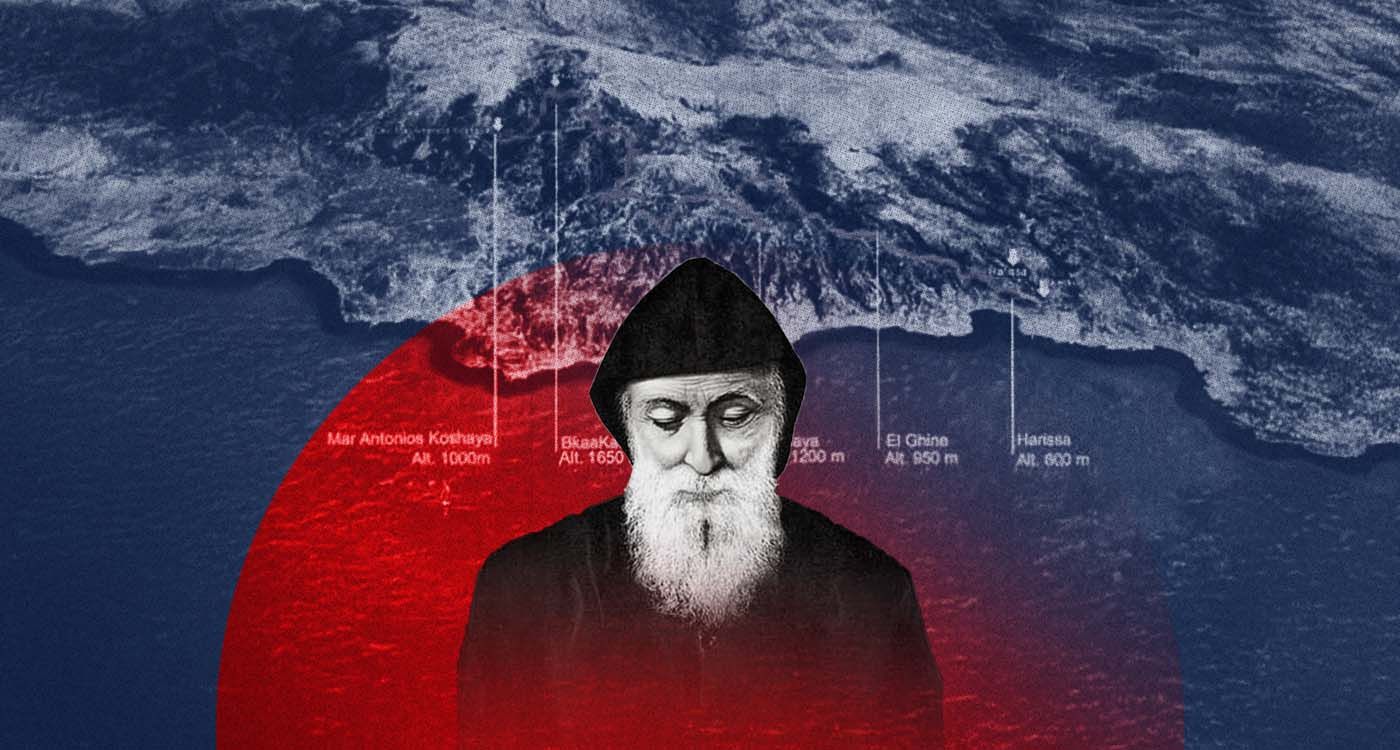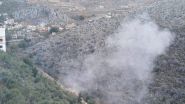
A path of faith, silence and beauty is about to open in the heart of Lebanon. Stretching 130 kilometers, the upcoming Darb Mar Charbel pilgrimage trail will honor the country’s most revered saint. A spiritual, cultural and rural project, the first segment will be inaugurated on July 20, 2025, the day of his feast.
Beyond the cedars and valleys, a breath of holiness emerges. This is not just a road to a shrine — it’s a journey to the soul of a nation. In 2026, Lebanon will inaugurate its very first long-distance pilgrimage trail: Darb Mar Charbel, literally meaning the path of Saint Charbel. Inspired by the famous Camino de Santiago, this 130-kilometer spiritual route will pass through around 40 villages, connect monasteries and sanctuaries, and breathe life into ancient routes once walked by saints, hermits and believers.
Born from the initiative of a handful of Lebanese pilgrims transformed by their experience in Compostela, the project is led by the Darbessama association and managed on the ground by the Lebanon Mountain Trail Association (LMTA). At the crossroads of history, faith, rural tourism and environmental conservation, Darb Mar Charbel is already shaping up to be a national adventure. It will link two symbolic points: to the north, the Monastery of Saint Anthony of Qozhaya in the holy valley of Qannoubine, and to the south, the Sanctuary of Our Lady of Harissa. The heart of the trail — its “kilometer zero” — is the Convent of Annaya, where the saint is buried.
Charbel, the Monk of Light
It’s impossible to walk this path without knowing the man whose name it bears. Youssef Antoun Makhlouf, who became Brother Charbel upon entering the Mayfouq monastery, and later Saint Charbel after his canonization by the Church in 1977, embodies for many Lebanese the ultimate humility and burning faith. Known for his ascetic life and miracles, he is considered one of the most important miracle-workers in modern history.
Born in 1828 in Bqaa Kafra, the highest village in Lebanon, he grew up among mountain peaks, in silence and contemplation. At 23, he left home to embrace monastic life. After years of formation in Mayfouq and then Annaya, he was ordained a priest in Bkerke. But it was in the Hermitage of Saints Peter and Paul, perched above Annaya, that he chose to spend the last 23 years of his life in prayer, fasting and meditation.
He died in 1898 and became known for the miracles attributed to him, the incorrupt state of his body and the thousands of healings linked to his intercession. Today, he is the most prayed-to Lebanese saint, both in Lebanon and in the diaspora — across all religions.
A Spiritual Journey Rooted in the Land
“The path will connect the key sites of the saint’s life, from the Monastery of Saint Anthony of Qozhaya in the Qannoubine Valley to the Harissa Sanctuary, passing through Bqaa Kafra, Hasroun, Dimane, Hadath al-Jebbe, Tannourine, Douma, Mayfouq, Ilige, Ehmej and of course Annaya, where the saint rests,” explains Omar Sakr, Executive Director of the LMTA, to This is Beirut.
Each stop has been designed as an immersion in Maronite spirituality: living convents, open chapels, silent hermitages and untouched nature.
This path allows walkers to rediscover the land of Saint Charbel: the villages where he lived and studied, the convent where he was trained and the hermitage where he spent more than two decades in prayer, meditation and working the land. “It’s a way to follow, step by step, the mystical trajectory of a man filled with silence and faith,” Sakr adds.
“The trail is divided into eleven stations: seven in the north, four in the south. We started with three sections in the north, covering about 40 km. They’ll be ready by July 2025,” explains Raymond Zind, a member of Darbessama’s organizing committee.
A Rediscovery of Ancestral Paths
“This is not a new trail, but a rediscovery of ancestral paths used by our forefathers between villages,” notes Omar Sakr.
In collaboration with municipalities, bishoprics and the Lebanese Maronite Order, the Darbessama and LMTA teams have carefully mapped a public route. Each village was involved: young people were hired for the work, local surveyors mobilized and women cooked for the workers.
“We hire youth from the involved villages, pay them and feed them for the trail work,” says Zind. “We buy what we need from local shops as much as possible. The village women prepare their lunches, and transport is handled by locals.”
“The trail mostly follows old walking paths through forests and natural sites, far from private properties. We avoid paved roads as much as possible, except for short sections that have become unavoidable,” he adds.
A Catalyst for Rural Revival
Darb Mar Charbel is also a tool for local development, entirely funded by private donations.
“No international organization or public institution is involved. We value our independence and refuse any external conditions,” Zind insists.
A symbolic contribution system has been created: “Anyone can fund one or more meters of the trail, at $20 per meter. An official receipt is issued by Darbessama.”
The project encourages gentle tourism: staying with locals, restoring traditional homes, promoting local products.
“All small businesses will benefit,” says Sakr. “Guesthouses, bakeries, pharmacies, local guides… Even convents will reopen their doors to host pilgrims.”
“The goal is also to allow people to stay on their land, to highlight their heritage and to revive local economies around respectful, low-impact tourism,” adds Zind.
Ultimately, Darb Mar Charbel is expected to boost spiritual and rural tourism, strengthen small businesses and guesthouses, and encourage residents to invest in their villages.
A Pilgrimage for the Soul and for Nature
The trail also offers a deep dive into Lebanon’s natural beauty: forests, valleys, springs, mountains, rivers and biodiversity. The Darbessama team is committed to promoting responsible tourism, respectful of the environment and local balance.
Environmental awareness will be an integral part of the experience. Every walker will be invited to respect nature, leave nothing behind and reconnect with the living world.
The idea: Walk slowly. Walk cleanly. Walk mindfully.
A Mountaintop Inauguration
On July 20, 2025, Saint Charbel’s feast day, the first segment of the trail — between Annaya, Lehfed, Mishmishet and Mayfouq, 16.5 km long — will be inaugurated.
“It’s one of the toughest, but also one of the most beautiful sections,” notes Omar Sakr.
A demanding 6-to-7-hour walk awaits pilgrims, in the presence of the President of the Republic and the Maronite Patriarch. On that day, Lebanon will officially join the great tradition of pilgrimage routes.
“The full itinerary should be completed during the last six months of 2026, with multilingual signage (Arabic and English), informational panels, meditation spaces and a botanical inventory. We’re also planning a printed guide and a mobile app,” says Zind.
Charbel, Forever Alive
More than a path, Darb Mar Charbel is a calling. A call to slow down. To walk. To breathe. To believe, perhaps. In a wounded Lebanon, searching for direction and light, this path offers a new way forward — geographical, spiritual, collective.
Like the silent monk who once prayed in the mountains, it whispers to the walker:
“Listen. Walk. Hope.”





Comments